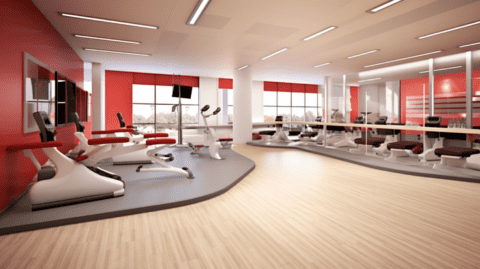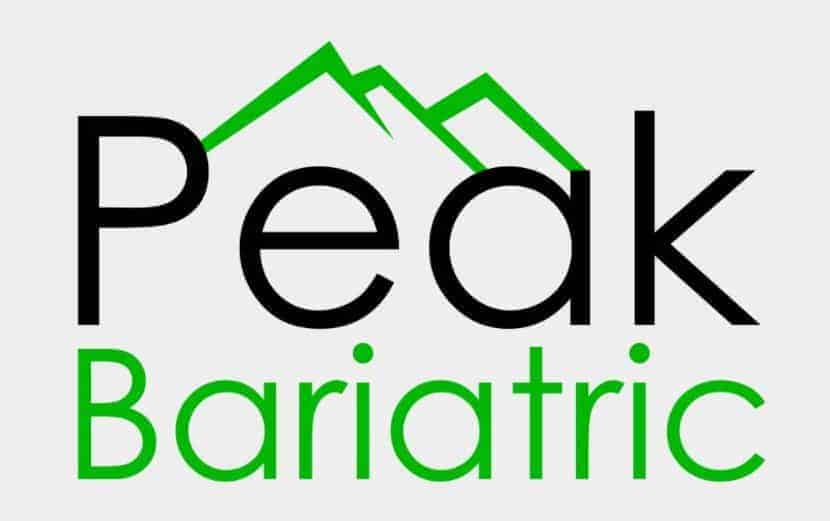Are you ready to embark on a journey to unlock your fitness potential, even with limited mobility? At Peak Bariatric, we believe that everyone, regardless of their physical limitations, deserves the opportunity to lead a healthy and active lifestyle. In this article, we will explore incredible exercises specifically designed to accommodate individuals with limited mobility. So let’s dive in and discover how you can achieve your fitness goals!

1. Chair Exercises for Total Body Workout
If you have limited mobility or find it challenging to stand for prolonged periods, chair exercises can be a game-changer. These exercises provide a full-body workout while keeping you comfortably seated. Let’s explore a few chair exercises:
- Seated Marches: Sit upright in a chair and lift one knee towards your chest, alternating between legs. Perform this exercise for a set amount of time or repetitions to get your heart rate up and engage your leg muscles.
- Chair Squats: Begin by sitting on the edge of the chair with your feet planted firmly on the ground. Stand up from the chair, using your leg muscles, and then slowly lower yourself back down. This exercise helps strengthen your lower body and improves overall stability.
- Seated Leg Extensions: While seated, extend one leg straight out in front of you and hold it for a few seconds. Lower the leg back down and repeat with the other leg. This exercise targets your quadriceps and can be modified by adding ankle weights for increased resistance.
2. Water Aerobics for Low-Impact Cardio
Water aerobics is an excellent choice for individuals with limited mobility or joint pain. The buoyancy of water reduces the impact on your joints while providing resistance to strengthen your muscles. Here are some water aerobics exercises to try:
- Water Walking: Walk briskly in chest-deep water, lifting your knees high with each step. The water’s resistance will engage your leg muscles and provide a low-impact cardiovascular workout.
- Leg Lifts: Stand near the pool’s edge and hold on for support. Lift one leg to the side and then lower it back down, repeating on the other side. This exercise targets your hip abductors and helps improve balance.
- Arm Circles: Stand in shoulder-deep water with your feet shoulder-width apart. Extend your arms to the sides and make small circles with your hands. Gradually increase the size of the circles to engage your shoulder muscles.
3. Yoga for Flexibility and Mind-Body Connection
Yoga is a versatile exercise that can be modified to suit individuals with limited mobility. It focuses on gentle movements, deep breathing, and mindfulness, providing numerous benefits for both the body and mind. Consider incorporating the following yoga poses into your routine:
- Seated Forward Fold: Sit on a yoga mat or a firm surface with your legs extended in front of you. Slowly reach forward, aiming to touch your toes or shins. This pose stretches your hamstrings and promotes spinal flexibility.
- Modified Tree Pose: Stand near a wall or use a chair for support. Shift your weight onto one leg and place the sole of the opposite foot on the inner thigh of your standing leg. Find your balance and hold the pose for a few breaths. This pose improves stability and strengthens the legs.
- Child’s Pose: Begin on your hands and knees, then gently lower your buttocks toward your heels while extending your arms forward. Rest your forehead on the mat or a cushion. Child’s Pose helps release tension in the back and promotes relaxation.
Remember to consult with your healthcare provider or a certified fitness professional before starting any exercise program, especially if you have specific medical conditions or concerns.
To learn more about how bariatric surgery can positively impact your weight loss journey and overall well-being, check out the resources available on our website:
- Achieving Long-Term Weight Maintenance with Dallas Gastric Bypass
- Your Ultimate Guide to Weight Loss Surgery: Make the Right Choice Today
- Debunking Myths and Misconceptions about Dallas Gastric Bypass
- Exploring Non-Surgical Alternatives to Gastric Bypass in Dallas
- Nutritional Guidelines for Dallas Gastric Bypass Patients: Fueling Your Health
Part 2: Strength Training for Stronger Muscles
In our quest to unlock your fitness potential, it’s essential to incorporate strength training exercises into your routine. Building muscle strength not only improves overall mobility but also enhances your metabolism and supports long-term weight management. Let’s explore some incredible strength training exercises that cater to individuals with limited mobility:
- Resistance Band Workouts: Resistance bands are versatile and perfect for strength training without putting excessive stress on your joints. Here are a few exercises you can try:
- Seated Rows: Secure the resistance band around a sturdy object and sit on a chair with your legs extended in front. Hold the band with your arms extended and palms facing each other. Pull the band toward your chest, squeezing your shoulder blades together. Slowly release and repeat.
- Leg Presses: Sit on a chair and place the resistance band around your feet. Extend your legs forward and press against the band, engaging your leg muscles. Gradually release and repeat. This exercise targets your quadriceps, hamstrings, and glutes.
- Seated Dumbbell Exercises: Dumbbells are excellent tools for strength training, and you can perform many exercises while seated. Here are a couple of examples:
- Seated Shoulder Press: Sit upright in a chair with a dumbbell in each hand, holding them at shoulder height. Press the dumbbells overhead, extending your arms fully. Slowly lower them back down and repeat. This exercise strengthens your shoulder muscles.
- Seated Bicep Curls: Sit on a chair with a dumbbell in each hand, palms facing forward. Keep your elbows close to your sides and curl the dumbbells toward your shoulders. Lower them back down and repeat. This exercise targets your biceps.
- Modified Push-Ups: Push-ups are a classic exercise for building upper body strength. If traditional push-ups are challenging, try these modified variations:
- Incline Push-Ups: Place your hands on a sturdy elevated surface, such as a countertop or wall. Step back and position your body at an angle. Bend your elbows and lower your chest toward the surface, then push back up. This exercise strengthens your chest, shoulders, and arms.
- Wall Push-Ups: Stand facing a wall and place your hands on the wall at shoulder height. Step back to create an angle and keep your body straight. Bend your elbows to bring your chest toward the wall, then push back to the starting position. This exercise targets your chest and arms.
Remember to start with light weights and gradually increase the resistance as your strength improves. Focus on maintaining proper form and breathing throughout each exercise.
To complement your exercise routine, proper nutrition is vital. Check out our informative articles on Nutritional Guidelines for Dallas Gastric Bypass Patients and Fueling Your Health to learn more about optimizing your dietary choices for a healthier lifestyle.
Part 3: Cardiovascular Exercises and Lifestyle Tips
To complete our series on unlocking your fitness potential with limited mobility, we will now explore cardiovascular exercises and provide lifestyle tips to support your fitness journey. Cardiovascular exercises are crucial for improving heart health, increasing endurance, and burning calories. Let’s dive into some incredible options:
- Stationary Cycling: Cycling is a low-impact exercise that can be easily adapted for individuals with limited mobility. Whether you have access to a stationary bike or a recumbent bike, cycling provides an excellent cardiovascular workout. Start with a comfortable resistance level and gradually increase it as you build strength and stamina. Aim for 20-30 minutes of cycling at least three times a week.
- Swimming or Water Aerobics: As mentioned in Part 1, water-based exercises are fantastic for individuals with limited mobility. Swimming, water walking, or participating in water aerobics classes can provide a full-body workout while minimizing stress on your joints. The buoyancy of water supports your body, making it easier to move and exercise effectively. Check with your local community center or fitness facility for water aerobics classes designed for individuals with limited mobility.
- Elliptical Training: Elliptical machines offer a low-impact alternative to running or jogging. These machines provide a smooth and fluid motion that mimics the natural stride of walking or running without the impact on your joints. Set a comfortable resistance level and stride at a pace that elevates your heart rate. Aim for at least 20 minutes of elliptical training per session.
In addition to incorporating these exercises into your routine, adopting a few lifestyle changes can enhance your fitness journey:
- Stay Active Throughout the Day: Look for opportunities to stay active throughout the day, even if it’s in short bursts. Take regular breaks from sitting to stretch or go for short walks. Engage in activities like gardening, household chores, or dancing to keep your body moving.
- Prioritize Sleep: Getting enough quality sleep is essential for overall health and well-being. Aim for 7-9 hours of sleep per night to support your body’s recovery and rejuvenation.
- Hydrate Properly: Drink plenty of water throughout the day to stay hydrated and support your body’s functions. Proper hydration is important for energy levels, muscle function, and overall health.
- Listen to Your Body: Pay attention to how your body feels during exercise. If you experience pain or discomfort, modify or stop the exercise. Always consult with a healthcare professional before starting or modifying your exercise routine.
By incorporating cardiovascular exercises into your routine and making small lifestyle adjustments, you can unlock your fitness potential and improve your overall well-being.
For more information and resources related to bariatric surgery, weight loss, and healthy living, explore the informative articles on our website:
- Your Ultimate Guide to Weight Loss Surgery: Make the Right Choice Today
- Finding Support and Community for Your Bariatric Surgery Journey
- Overcoming Common Challenges After Gastric Bypass
- The Ultimate Guide: Unmasking the Perfect Weight Loss Supplement for Your Journey
Remember, consistency and dedication are key. Celebrate your progress, stay motivated, and enjoy the journey towards a healthier, more active you.
Key Takeaways
- Introduction: “Unlock Your Fitness Potential: Incredible Exercises for Limited Mobility”
- Emphasizes the importance of fitness and explores exercises catered to individuals with limited mobility.
- Part 1: Chair exercises and water aerobics for a total body workout
- Describes the benefits of chair exercises and how they provide a full-body workout while being seated.
- Provides examples of chair exercises like seated marches, chair squats, and seated leg extensions.
- Highlights the advantages of water aerobics, low-impact exercises that can be performed in the water.
- Mentions exercises like water walking, leg lifts, and arm circles as effective water aerobics options.
- Part 2: Strength training with resistance bands, dumbbells, and modified push-ups
- Discusses the significance of strength training for building muscle strength, improving mobility, and supporting weight management.
- Introduces the use of resistance bands for versatile strength training exercises with minimal joint stress.
- Provides specific exercises such as seated rows and leg presses using resistance bands.
- Explains how dumbbells can be incorporated into seated exercises like shoulder presses and bicep curls.
- Offers modified push-up variations like incline push-ups and wall push-ups for upper body strengthening.
- Part 3: Cardiovascular exercises including stationary cycling, swimming, and elliptical training, plus lifestyle tips
- Stresses the importance of cardiovascular exercises for heart health, endurance, and calorie burning.
- Highlights stationary cycling as a low-impact option that can be done on a stationary or recumbent bike.
- Emphasizes the benefits of swimming, water walking, and water aerobics for a full-body workout with reduced joint impact.
- Introduces elliptical training as an effective exercise that mimics natural walking or running motions without joint stress.
- Provides lifestyle tips such as staying active throughout the day, prioritizing sleep, proper hydration, and listening to your body’s cues during exercise.
- Additional resources available on the Peak Bariatric website for bariatric surgery, weight loss, and healthy living.
- Encourages readers to explore the Peak Bariatric website for more information on topics such as nutritional guidelines, overcoming challenges after gastric bypass, finding support and community, and understanding weight loss surgery options.
- Mentions the availability of resources related to bariatric surgery, weight loss, and healthy living on the website to support readers in their fitness journey.
Remember, the full article delves into each section with detailed explanations, exercise instructions, and additional tips.






